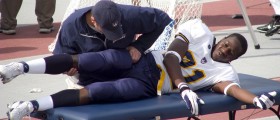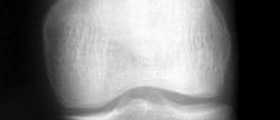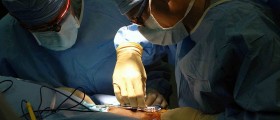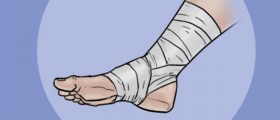Introduction to Torn Cartilage in Ankle
When a person tears the cartilage in their ankle it can be a really the painful experience, therefore it is really important to treat the injury as soon as possible.
The Achilles tendon is what connects the muscles of the lower part of the leg to the heel bone, and if this part of the foot is injured, this tendon could rupture if the injury is severe.

- The most common ankle injuries are sprains, with a daily occurrence (incidence) of one in every 10,000 people. In the U.S., for example, there are 23,000 ankle injuries every day, with the highest injury rate for every hour of play in basketball, soccer, and volleyball. The articular cartilage is damaged by direct impact on the bone due to ankle sprains.
- Fractures are becoming recognised as a major cause of cartilage damage and, in this context, are called bone and cartilage (osteochondral) defects (lesions) of the talus. Both acute (new) injuries and chronic (long-term) insufficient ligament stability can lead to osteochondral lesions of the talus.
- Patients usually have persistent pain after an ankle sprain or injury. Pain is typically deep inside the ankle joint and may be accompanied by occasional swelling, stiffness and weakness. Mechanical symptoms such as locking and catching may also be present.
- X-rays of the ankle are appropriate in the initial assessment of a patient with persistent pain after an ankle sprain. However, as routine X-rays can fail to identify up to half of cartilage defects identified by other means, patients with severe pain lasting 8–12 weeks or longer should have magnetic resonance imaging (MRI). This has an increased sensitivity for diagnosis and for characterising defects in preparation for possible surgery.
- Managing bone and cartilage (osteochondral) defects of the talus bone continues to be a challenge. There is an association between ankle instability and injury for both new and old talus injuries. Early attempts at stimulating healing, whether by curettage and/or drilling and microfracture achieve similar results.
- Patients in whom first-choice treatments have failed are candidates for cartilage replacement surgeries such asosteochondral autograft transfer (OATS), autologous chondrocyte implantation (ACI) and matrix-based chondrocyte implantation (MACI). Larger, non-healing lesions are potential candidates for bulk osteochondral allografts.
- Minor, stable injuries can be treated non-operatively by being immobilised and protected from weight bearing for six weeks. This is followed by a rehabilitation programme involving gradual weight bearing for another six weeks, with a focus on range of motion and ankle strengthening exercises. Range of motion exercises are important for cartilage healing, as they support the diffusion of nutrients through the fluid in the ankle joint, although they should only performed once the initial injury has stabilised.
- After cartilage injury there must be a six-week period of non-weight bearing, but full recovery can take up to a year to fully heal and regain the full range of movement.
Any strain that is great can cause the ligaments and tendons of the ankle to strain or tear.
There are many injuries of the ankle that are possible, especially for people who participate in aggressive sports.
Symptoms of Torn Ankle Cartilage
One of the major symptoms of such a condition is instability. A person will not be able to put weight on the ankle if the cartilage has been damaged.
Pain will also be experiences with torn cartilage or a torn ligament, though the degree and severity of the pain will of course depend on how bad the injury was. All injuries of the ankle, even sprains, will cause pain, because it is a very sensitive part of the body.
When such an injury does occur, there will also be a lot of swelling and inflammation which is caused by fluid collecting around the affected area. The ankle can swell up so bad that it will not be able to move at all. If the inflammation and swelling is very severe, there could be another problem, and not just torn cartilage.
Many athletes say that they know they have a problem with the ankle when they here a popping sound at the moment of the injury. This is usually heard when a ligament is torn and it sounds a little like snapping a rubber band.
Bruising is also another visible sign of torn cartilage in the ankle. If the cartilage or ligaments are injured, the blood will start to poll under the skin and bruising will ensue.
Treatment of Torn Cartilage
The common treatment is the rice procedure, which includes a lot of rest, ice, compression and elevation for the ankle. Of course, the treatment will always depend on the severity of the injury.
There are also medicines that will be prescribed to make the person feel more comfortable during recovery and take care of some of the pain that comes along with the injury.
In the most extreme injuries, an ankle arthroscopy will be needed. If there are remnants of a bone chip or broken cartilage in the ankle, then surgery will be needed to fix this problem.
The surgeon will reconstruct the ankle and repair the torn cartilage by using a suture and stitches. Sometimes other tendons in the foot are used to repair the ligaments that were damaged.
- www.nhs.uk/conditions/cartilage-damage/
- www.nhs.uk/conditions/cartilage-damage/treatment/
- Photo courtesy of Erwans Socks via Unsplash: unsplash.com/photos/YGE42qjlWjE

















Your thoughts on this
Loading...